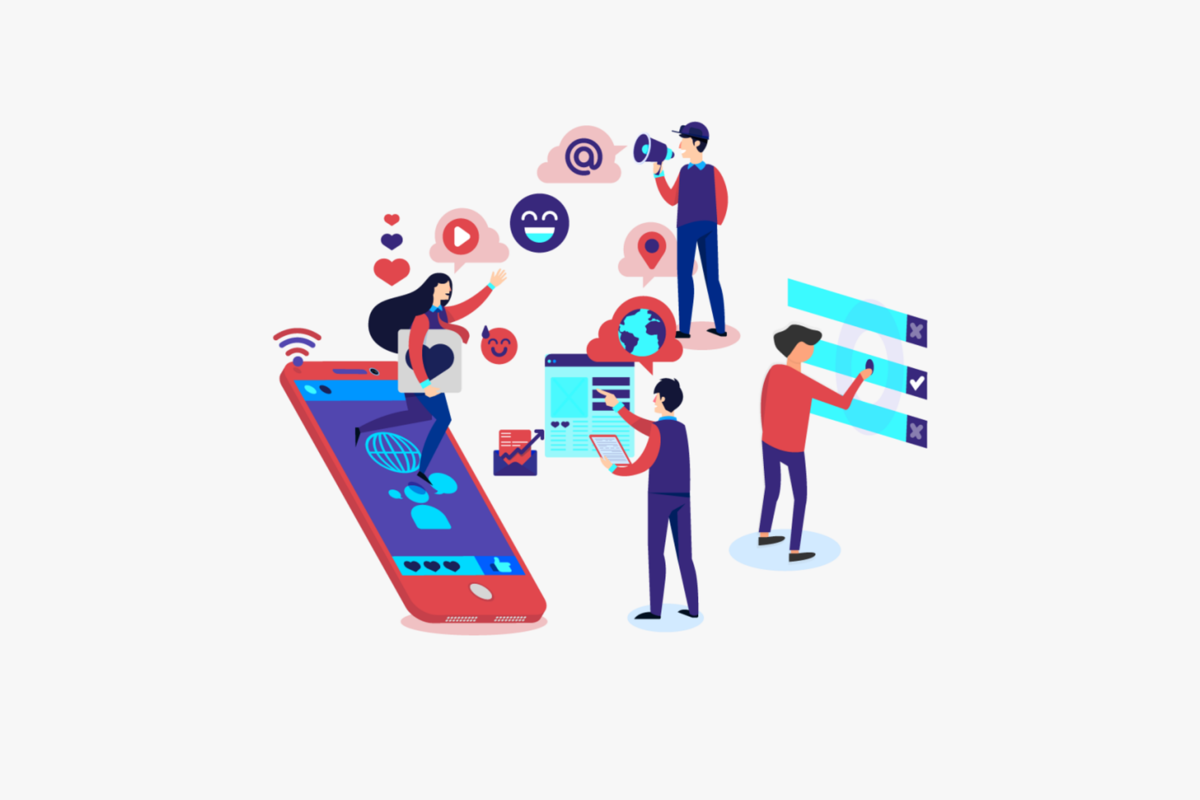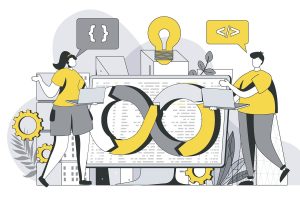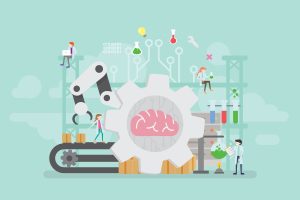The necessity for proactive systems management is becoming increasingly apparent as the world gets increasingly linked. Organizations need to be able to monitor their systems and be informed of any potential issues if they are to stay current with the always-shifting environment.
Two of the most crucial tools in the arsenal of a proactive systems manager are monitoring and alerting. Organizations can spot potential difficulties before they develop into significant concerns by continuously monitoring their systems. Additionally, by setting up alerts, they may ensure they are informed of any issues as soon as they arise.
It is possible to monitor various things, including the functionality of servers and databases, application performance, and resource utilization. By monitoring these factors, organizations can gain a comprehensive picture of how their systems operate and pinpoint any areas requiring attention.
Monitoring and alerting are both crucial. Without alerts, issues would only come to the attention of organizations after they had already caused significant disruptions. Organizations can ensure that they are informed of any problems as soon as they arise by setting up alerts, enabling them to address them before they result in damage.
System administrators, developers, and managers are just a few individuals to whom alerts might be issued. Ensuring that the proper individuals are informed of the appropriate issues is critical to enable them to respond appropriately.
Any proactive systems manager needs to use monitoring and alerting. Organizations may guarantee that they are aware of any possible issues as soon as they arise so that I can take action to rectify them before they cause any damage by continuously monitoring systems and setting up alerts.
The role of monitoring and alerting in proactive systems management
We know how crucial it is to identify problems early and take action. However, why is that so? What advantages can prompt issue detection and resolution offer?
-
Greater Speed of Resolution
Rapid issue detection and response can reduce the time needed for resolution. Early detection of issues allows you to address them before they can do significant harm. It is especially crucial if serious problems could cause your entire system to fail.
-
Lesser Effects on Users
The impact on users is lessened due to early identification and action. Early detection of a problem allows for implementing a fix before it can seriously disturb users. In some circumstances, such as with security vulnerabilities, prompt identification and response may shield users from adverse effects.
-
an increase in system stability
Rapid problem-solving can also help your system run more reliably as a whole. It is because resolving problems as they emerge stops them from building up, leading to more considerable challenges in the future. Your system will be less likely to encounter significant problems or breakdowns.
-
Lower Costs
Last but not least, prompt detection and action can also result in cost savings. It is because fixing a problem will take less time and effort the earlier it is discovered. Early problem detection can also save problems from causing more harm requiring correction.
Overall, there are numerous advantages to swiftly identifying and resolving problems. Many benefits include quicker resolution times, less user impact, increased system stability, and lower costs. So, watch for issues and fix them immediately to improve your system.
Benefits of timely detection and response to issues
Any business continuity strategy must include both monitoring and alerting as essential elements. Spotting problems that could interfere with business operations without thorough tracking can be challenging. Additionally, organizations can take prompt and efficient corrective action to avoid or lessen the impact of disruptions with sufficient alerting.
Any business continuity strategy should aim to reduce the adverse effects of disruptions on daily operations. Efficient monitoring and alerting can play a crucial part in accomplishing this goal.
Potential interruptions can be found through monitoring before they happen. Businesses can monitor important indicators to spot possible problems early and take action to reduce or avoid them.
In the event of an interruption, alerting can assist organizations in taking prompt and efficient corrective action. Businesses can make sure that the appropriate individuals are aware of the issue and can take action to fix it by sending alerts to essential workers.
Business continuity problems can be avoided or reduced with the help of effective monitoring and alerting. Businesses may maintain smooth operations and avoid expensive downtime by anticipating probable disruptions and taking appropriate action.
Impact of effective monitoring and Alerting on business continuity
The CPU, memory, disk, and network are the four primary system resources you should monitor in terms of performance. Keeping a close eye on all four of these resources is crucial because they can all significantly impact how well your system performs.
CPU:
Since the CPU controls everything, it may significantly affect performance. Overloaded CPUs might begin restricting other system components, causing slowdowns and crashes.
You need to monitor your CPU utilization if you want to prevent this. If you see heavy utilization, your CPU may require an upgrade or additional cores. You can also make your code more efficient by optimizing it.
Memory:
Another crucial resource that may affect performance is memory. Your system may start swapping data to and from the disk if your memory is low, which can cause a considerable delay.
If you want to prevent this, you must monitor your memory consumption and ensure you have enough RAM to meet your needs. To utilize less memory, you can also optimize your code.
Disk:
The two key factors that affect disk performance are speed and capacity. Your disk may begin to sluggish down if it becomes full. Additionally, a slow disk might affect the system’s overall performance.
You must monitor your disk utilization and ensure enough space to prevent these issues. You can also optimize your code to use less disk space.
Network:
Finally, network performance can affect how well your system performs. A slow network can affect how quickly data is transferred, slowing it down.
You must monitor your network consumption and ensure enough capacity to prevent this. You can also optimize your code to consume less network bandwidth.
The CPU, RAM, disk, and network are the four primary system resources you should monitor for performance. Potential performance issues can be avoided by monitoring these resources.

Performance monitoring for system resources (CPU, memory, disk)
Network monitoring entails seeing and analyzing traffic to detect potential problems and improve performance. Network traffic analysis, packet capture, and SNMP monitoring are some of the more popular tools and methods that can be utilized for network monitoring.
-
Analysis of Network Traffic
Monitoring and analyzing the data moving through a network to spot trends and patterns is a technique known as network traffic analysis. A few tools can automate this procedure, but it can also be done by hand. The study of network traffic can be used to spot possible problems, including bandwidth constraints, bottlenecks, and security risks.
-
Protocol Capture
Data packets passing over a network are captured and stored through packet capture. Hardware instruments like network taps or software programs like Wireshark can be used. Numerous uses for packet capture exist, such as network forensics, troubleshooting, and security analysis.
-
SNMP Inspection
Network device monitoring using the SNMP protocol is known as SNMP monitoring. A range of tools, including both free source and paid options, can be used for this. A wide range of data, including network performance, uptime, and security, can be tracked with SNMP monitoring.
These are some of the most widely used tools and approaches for network monitoring. However, there are many others. Network monitoring is crucial to ensure a network is operating effectively and smoothly.
Network monitoring for connectivity and traffic analysis
The practice of measuring, examining, and regulating the performance of software applications is known as application monitoring. Application monitoring aims to ensure that apps are accessible and operating as expected. Application monitoring can be used to find and fix issues and contribute to their avoidance in the first place.
Application monitoring can be divided into two categories: performance monitoring and availability monitoring. Monitoring an application’s availability focuses on making sure it is active and accessible to users at all times. Conversely, performance monitoring ensures an application is responsive and operating as planned.
The performance and availability of an application can be affected by various factors. These consist of the user environment, the application code, the application dependencies, and the supporting infrastructure.
Two crucial components of application monitoring are availability monitoring and performance monitoring.
Monitoring an application’s availability focuses on making sure it is active and accessible to users at all times. Examining the application’s uptime, response time, and error rate falls under this category. Conversely, performance monitoring ensures an application is responsive and operating as planned. It entails monitoring the application’s speed, latency, and CPU and memory utilization, among other things.
The performance and availability of an application can be affected by various factors. These consist of the user environment, the application code, the application dependencies, and the supporting infrastructure.
There are several reasons why it’s crucial to keep track of an application’s availability and performance. It can first aid in problem recognition and diagnosis. Second, it can help in shielding against potential issues before they arise. Thirdly, it can assist in ensuring that apps are consistently accessible and operating as expected.
For monitoring applications, a variety of tools and technologies can be applied. These include log management tools, system monitoring tools, and application performance management (APM) tools.
Developers can monitor and improve their apps’ performance using application performance management (APM) solutions. The most well-known APM tools are Dynatrace, AppDynamics, and New Relic.
Advancements in artificial intelligence and predictive analytics
Predictive analytics and artificial intelligence (AI) are two of the trendiest subjects in technology right now.
The following seven developments in this cutting-edge technology will undoubtedly alter how we live and work:
- intelligent algorithms. AI systems are continuously becoming more intelligent and effective. They can learn more quickly and generate more accurate predictions because of recent developments in machine learning.
- healthcare predictive analytics. Predictive analytics is increasingly employed in the healthcare sector to enhance patient outcomes. Doctors can more accurately estimate which medicines will be effective for new patients by studying data from previous patients.
- Autonomous vehicles. AI is mainly developing self-driving automobile technology. For navigation, these vehicles rely on sensors and computer vision.
- robot personal assistants. Virtual assistants like Siri and Alexa are becoming increasingly sophisticated thanks to AI. The capacity of these bots to comprehend and react to consumers is more human-like.
- higher facial recognition accuracy. Thanks to AI, facial recognition technology is becoming more precise. There are several applications for this technology, including marketing and security.
- intelligent search engines. Search engines like Google are using AI to provide people with better results. They can deliver more pertinent and focused results by comprehending user intent.
- more accurate fraud detection. Financial organizations are using AI to find fraud. AI can assist in spotting potential fraudsters before they strike by studying data patterns.
Advancements in artificial intelligence and predictive analytics
An interconnected network of gadgets and sensors known as the “Internet of Things,” or “IoT,” allows for the collection and sharing of data. The Internet of Things (IoT) can monitor and track a wide range of data, including but not limited to weather, traffic, energy use, and even our physical activity and health. Then, we may utilize this information to better our lives in various ways, such as by easing traffic congestion and enhancing our physical and mental well-being.
But how does this relate to alerting and monitoring?
The IoT can monitor practically anything and inform users when something goes wrong. For instance, a home security system may use IoT sensors to monitor trespassers before alerting the owners. Another option is a fitness tracker to monitor your heart rate via IoT and inform you if it notices anything unusual.
There are countless options, but the IoT has the potential to be a potent monitoring and warning tool. We can only assume that the IoT’s impact on monitoring and alerting will increase as it develops and flourishes.

Observation and Alerting
-
Internet of Things (IoT) effects on predictive analytics and artificial intelligence
A network of physical objects linked to the Internet is known as the Internet of Things (IoT). These things can communicate and exchange info. Making predictions or automating chores are both possible with this interaction.
IoT significantly affects predictive analytics and artificial intelligence (AI). Data from IoT can be utilized to develop and hone AI models. Future event predictions can be made using this data. IoT can be used to automate processes as well. A smart home might have sensors that can tell when someone is home. The house may then turn on the lights or modify the temperature automatically.
IoT can be used to alert and monitor as well. For instance, a fitness tracker can track an individual’s heart rate. The tracker can notify the user and recommend lowering the heart rate if it rises too high.
IoT is transforming how we work and live. It can improve the effectiveness and simplicity of our lives. Predictive analytics and AI are just now starting to feel the effects of IoT.
-
IoT’s advantages for AI and predictive analytics
IoT devices are getting more and more well-liked as a result of the numerous benefits they provide to both consumers and enterprises. Predictive analytics and AI are two of the most promising IoT applications.
Predictive analytics models can be strengthened by using data from IoT devices to gather information about the environment around us. For instance, weather sensor data can be utilized to increase the precision of forecasts. The accuracy of traffic predictions can also be increased by using the information gathered by traffic sensors.
IoT data can also be utilized to increase the precision of behavioral prediction models. For instance, predictions regarding people’s health and fitness levels can be made more accurately using data gathered by fitness trackers.
IoT data has a wide range of additional potential uses in the fields of AI and predictive analytics. Only our imagination can place a limit on the possibilities.
There are many advantages to leveraging IoT for AI and predictive analytics. We can increase forecast accuracy and improve future decision-making by leveraging the potential of IoT.
The impact of the Internet of Things (IoT) on monitoring and alerting
IoT devices are becoming more common in homes and organizations, and their data might benefit applications in predictive analytics and artificial intelligence. To fully utilize this data, however, several obstacles must be removed.
IoT devices frequently produce a lot of data, which can be challenging to handle and make sense of. It is one challenge. Another issue is that existing data processing and analysis methods need to be more appropriate for IoT devices, necessitating the development of new procedures to utilize their data. Last but not least, IoT data security and privacy issues are also a big problem because this data can frequently contain sensitive information about people and their activities.
Despite these difficulties, applications for predictive analytics and AI have the potential to benefit from IoT data greatly. This data can enhance forecasts, make better judgments, and even automate processes with the correct tools and procedures.
The Internet of Things (IoT) is a network of physical objects, including furniture, cars, appliances, and other things, that are connected and share data. These objects are implanted with electronics, software, sensors, and connectivity.
According to a recent analysis by Juniper Research, there will be 46.08 billion connected devices worldwide by 2021, up from 15.41 billion in 2015. The declining cost of sensors and connectivity and the rising demand for improved data and analytics are the main drivers of this rapid rise.
Today’s most revolutionary technologies are the Internet of Things (IoT) and artificial intelligence (AI). Together, they can alter how we work, live, and relate to the world.
IoT has significantly impacted several industries, including manufacturing, shipping, healthcare, and retail. In the future, we can anticipate even more disruptions as technology develops.
On the other hand, artificial intelligence (AI) is still in its infancy but is already beginning to impact our lives significantly. According to a recent McKinsey World Institute report, artificial intelligence (AI) might boost the world economy by $13 trillion by 2030.
What, then, lies ahead for AI and IoT?
Many industry analysts predict that IoT and AI will converge even more. AI will be required to interpret the growing amount of data IoT devices collect.
IoT systems’ effectiveness will increase, and new applications and services that are currently unimaginable will be developed using this data.
AI could be used to create new algorithms that improve device communication or automatically identify and fix IoT system issues.
We should expect to see more IoT applications and gadgets powered by AI in the future. These technologies will significantly influence our lives today and how we live in the future as they develop further.



